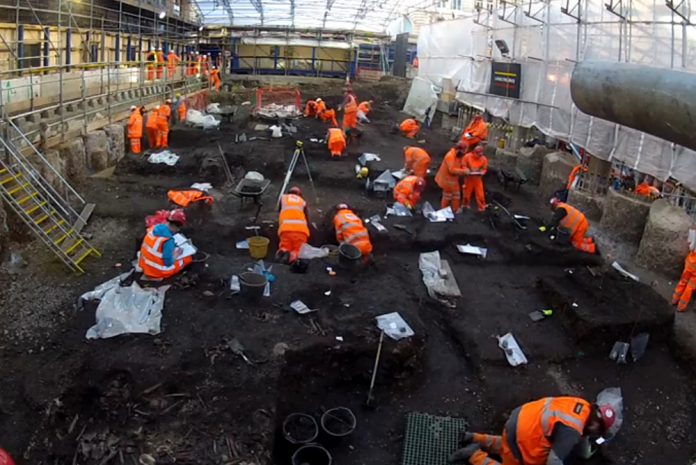The Bedlam burial ground was in use from 1569 to at least 1738, spanning the start of the British Empire, civil wars, the Restoration, Shakespeare’s plays, the Great Fire of London and numerous plague outbreaks. 2015 marks the 350th anniversary of London’s last Great Plague in 1665 and we hope that scientific tests on excavated plague victims will help us to better understand the evolution of the plague pathogen.
Research also aims to shed light on the migration patterns, diet and lifestyles of those living in the capital at the time. The excavated remains will be brought to MOLA for testing by our osteologists before being reburied in a consecrated burial ground.
Excavation of the burial ground will continue for next the four weeks, after which our archaeologists will dig the medieval marsh deposits and Roman remains. A Roman road runs through the site, which has already yielded a number of interesting Roman artefacts, such as horseshoes and cremation urns. We expect to finish fieldwork in September, after which detailed analysis of our findings will commence and construction will proceed by Crossrail contractor Laing O’Rourke.
Nick Elsden, Project Manager from MOLA said: “Construction for Crossrail is providing rare and exciting opportunities for archaeologists to excavate and study areas of London that would ordinarily be inaccessible, such as under established road-systems. There are up to six metres of archaeology on site, in what is one of the oldest areas of the city, so we stand to learn a great deal.”
The Bedlam burial ground was used by people from around London who could not afford a church burial or who chose to be buried there for religious or political reasons. It was also used as an overflow cemetery when existing sites were full, including in times of plague. The infamous 17th century Levellers, John Lilburne and Robert Lockyer, are believed to be buried at the site, along with Sir Ambrose Nicholas, Lord Mayor of London in 1575.
To date archaeological excavations for Crossrail has found more than 10,000 artefacts across over 40 construction sites. It is the UK’s largest archaeology project. Preliminary excavation at the Liverpool Street site in 2013 and 2014 uncovered more than 400 skeletons.
For more information about the archaeology of Crossrail please visit the Crossrail website.


